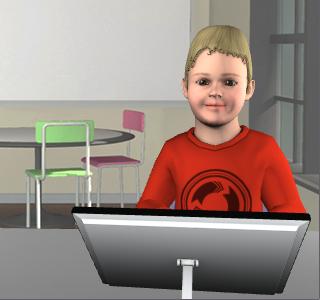Question
Do you have any exercises to help cure paralysis of the right true vocal cord that results in dysphagia?
Answer
I'm not sure if "cure" is the correct term, but here are some treatment options....
If impairment of true vocal cord movement is suspected based on voice quality or the results of diagnostic swallowing testing, an ENT evaluation should be the first step to confirm the diagnosis, determine etiology, and rule out any pathology. As a team, speech pathology and ENT should determine the treatment plan.
Behavioral intervention generally involves vocal cord (VC) adduction exercises to strengthen VC movement. One can push on the seat of a chair, and/or pull against the seat, while simultaneously phonating a clear "ah". Using a hard glottal attack to phonate "ah" is another recommendation. Logemann (1998) recommends repeating each exercise (push, pull, hard glottal attack) 5 times, completing 3 sets of the sequence 5-10 times a day. Other treatment options may include using a supraglottic swallow maneuver in which the person is instructed to tightly hold their breath while swallowing then to cough immediately after the swallow before resuming breathing. Head turned to the affected side during swallowing may also help achieve improved approximation of the VCs during swallowing. The suggested maneuvers and strategies should be attempted during the diagnostic swallowing evaluation in order to determine their effectiveness.
Surgical intervention is initially conservative as recovery of the recurrent laryngeal nerve (RLN) is anticipated within the first 6 months of injury. If recovery of function is anticipated, augmentation of the VC with an absorbable material, such as collagen or fat may be completed. If functional improvement is not expected, the material injected into the VC is more permanent, such as Teflon. EMG testing to determine integrity of the RLN generally should be completed before the more permanent methods of surgical treatment are undertaken.
Concerning research on these therapeutic techniques, no prospective study has been completed to confirm that behavioral swallowing treatment for VC movement impairment improves vocal cord adduction and eliminates aspiration. A recent study completed on a homogeneous population revealed that the incidence of airway invasion was not significantly reduced following surgical intervention for VC paralysis (Bhattacharyya, Kotz, & Shapiro, 2002). Therefore, it is important during a swallowing evaluation to differentiate if aspiration occurred pre-, intra-, or post-deglutitive and to have an understanding of the contribution of the biomechanics of deglutitive function prior to beginning therapy or surgical intervention.
Stephanie Daniels, PhD, is a research speech pathologist at the VA Medical Center in New Orleans and Adjunct Assistant Professor in Neurology at Tulane University Health Sciences Center. She is funded by the Department of Veterans Affairs. Her research interest is the neural mechanisms of swallowing. She has published numerous peer-reviewed articles in this area.

